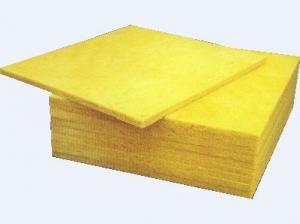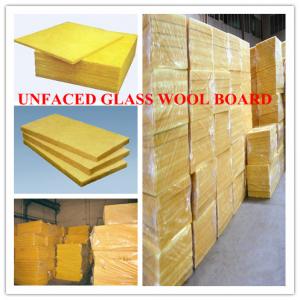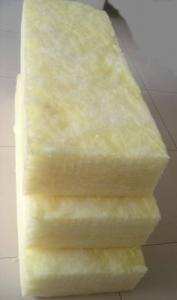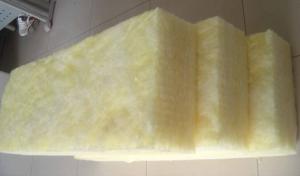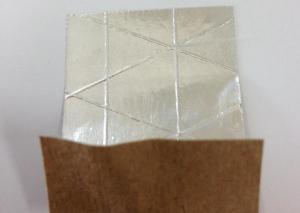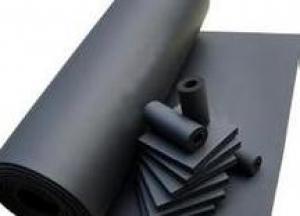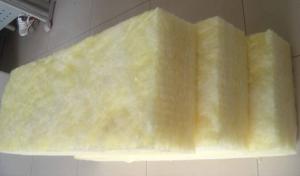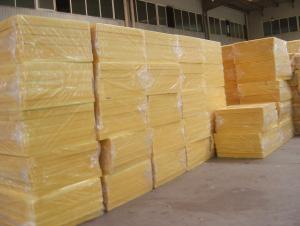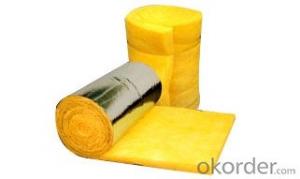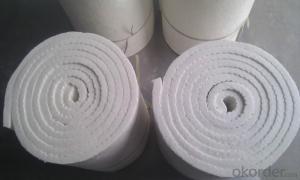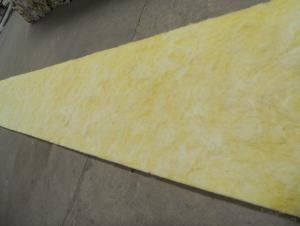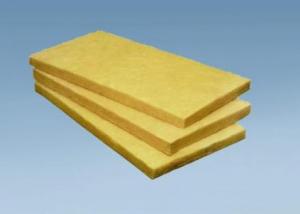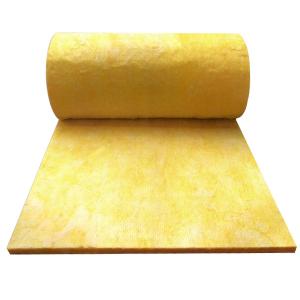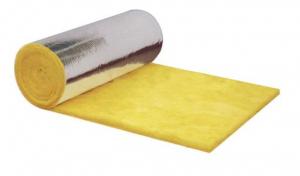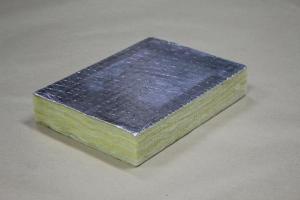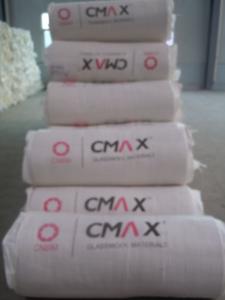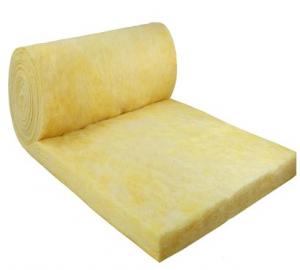Glass Wool Insulation Batts
- Loading Port:
- China Main Port
- Payment Terms:
- TT or LC
- Min Order Qty:
- 1000 roll
- Supply Capability:
- 1000000 roll/month
OKorder Service Pledge
OKorder Financial Service
You Might Also Like
Glass wool Blanket with Facing for thermal Insulation
1.Structure of Glass wool Blanket with Facing for thermal Insulation:
Glass wool with Facing is an industrial product made by spinning glass into a fibrous material that can be packed in mats and Blankets. This product is used as insulation and in other applications, like for air filters. Glass wool is 100% recyclable. It is manufactured from sand and recycled glass(up tp 80% cullet) and offers a very positive environmental balance sheet. It protects the environment, from the beginning to the end of its life cycle and gives more comfort and savings to the occupants of the buildings it insulates.
Glass wool raw materials The basic raw materials for fiberglass products are a variety of natural minerals and manufactured chemicals. The major ingredients are silica sand, limestone, and soda ash. Other ingredients may include calcined alumina, borax, feldspar, nepheline syenite, magnesite, and kaolin clay, among others. Silica sand is used as the glass former, and soda ash and limestone help primarily to lower the melting temperature. Other ingredients are used to improve certain properties, such as borax for chemical resistance. Waste glass, also called cullet, is also used as a raw material. The raw materials must be carefully weighed in exact quantities and thoroughly mixed together (called batching) before being melted into glass.
The Manufacturing Process
Melting / Forming into fibers /Continuous-filament process/Staple-fiber process/ Chopped fiber/ Glass wool / Protective coatings /Forming into shapes

2.Main Features of Glass wool Blanket with Facing for thermal Insulation:
The glass wool Blanket with Facing is applied for large laying area. In the field of insulation materials, we are mainly specializing in Glass wool products, including Blankets, Blankets and pipes. The advantage of this material is numerous: noncombustible, nontoxic, and resistant to corrosion. It has low weight, low thermal conductivity, stable chemical property, low moisture rate and good hydrophobicity. These products have been widely used in heat preservation, thermal insulation and sound absorption in construction, chemical industry, electronic industry, electric power, metallurgy, energy industry, and communication. High density panels laminated with facing can be used for Air-conditioning duct system.
3. Glass wool Blanket with Facing for thermal Insulation Images
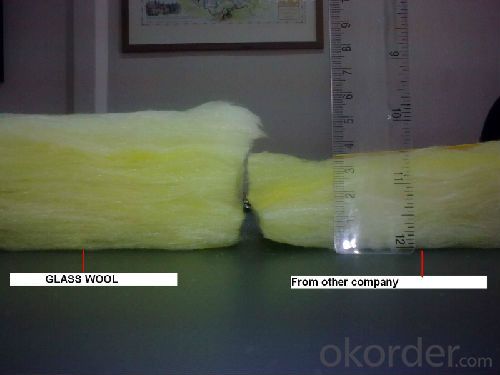
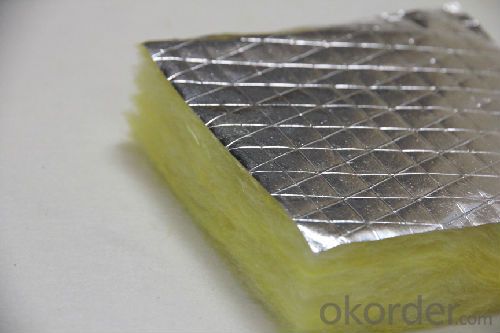
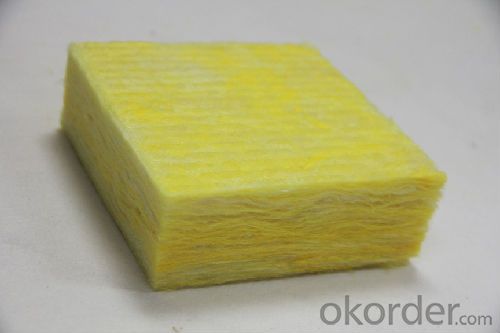
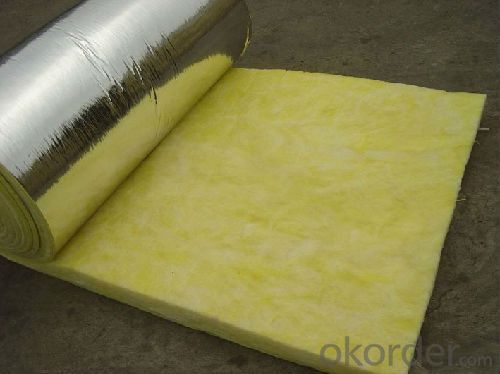
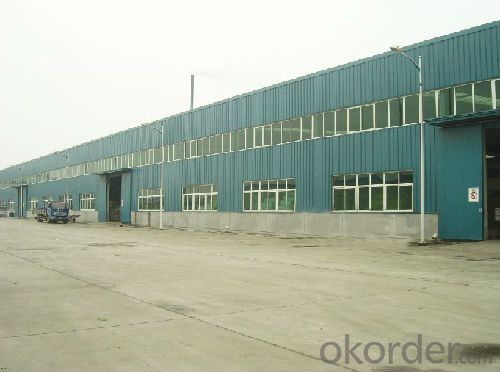


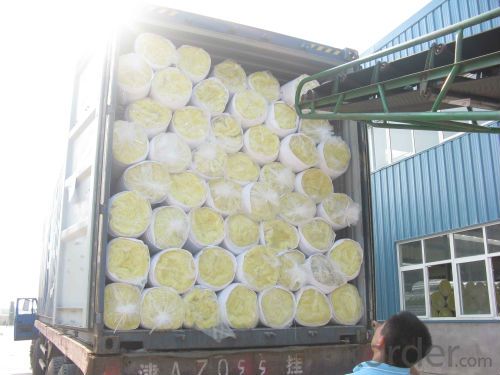
4. Glass wool Blanket with Facing for thermal Insulation Specification
The glass wool Blanket is applied for large laying area. Besides the character of thermal insurance, it also has the performances of shock absorption and acoustical isolation, especially for middle or low frequency sound. It also can cancel the noise and improve working environment.
The glass wool Blanket with Facing surface has good capability of heat radiation protection.
Technical Data
Item | Unit | Index |
Density | Kg/m3 | 12-96 |
Thickness | mm | 25-150 |
Width | mm | 600-1200 |
Length | mm | 1200-3000 |
Both unfaced and faced felts can be provided.
5.FAQ
We have organized several common questions for our clients,may help you sincerely:
① Where you used this?
These products have been widely used in heat preservation, thermal insulation and sound absorption in construction, chemical industry, electronic industry, electric power, metallurgy, energy industry, and communication. High density panels laminated with facing can be used for Air-conditioning duct system.
②How to guarantee the quality of the products?
We have established the international advanced quality management system,every link from raw material to final product we have strict quality test;We resolutely put an end to unqualified products flowing into the market. At the same time, we will provide necessary follow-up service assurance.
③How you control the quality?
During the production of fiberglass insulation, material is sampled at a number of locations in the process to maintain quality.
- Q:What is the difference between anti-high temperature glass wool and ordinary glass wool?
- Difference: High-temperature glass wool is made up of glass fibers and special high-temperature adhesive. It is yellowish with curing agent as the high temperature adhesive and with a small quantity of glue. While ordinary glass wool is dark yellow with ordinary resin adhesive as the binder.
- Q:Can glass wool be used for external wall insulation?
- Yes, glass wool belongs to the category of glass fiber, which is a kind of man-made inorganic fiber. With good thermal insulation and sound-absorbing properties. Currently the relatively good glas wool on the market is Huamei Senda.
- Q:Does mineral wool, rock wool and glass wool board refer to the same kind of board?
- They are not the same material, mineral wool is made by natural mining, rock wool is made by processing a kind of rock, and glass wool is made by processing glass.
- Q:What is the difference between the glass fiber and glass wool?
- Fiberglass is an excellent inorganic non-metallic material. There are many kinds of glass fibers whose advantages are good insulation, heat resistance, corrosion resistance, high mechanical strength, and the drawbacks are brittle and poor wear resistance. It is made from glass ball or wasted glass through high temperature melting, wire drawing, winding and weaving. The monofilament diameter is between several microns and dozens of microns, the same as 1 / 20-1 / 5 of a human hair. Each bunch of fibre precursor consists of hundreds of or even thousands of monofilaments. Glass fiber is usually used as reinforcing material of composite material, electric insulation material, thermal insulation material, circuit board and various areas. Glass wool, a man-made inorganic fiber, belongs to a kind of glass fiber. It is a spongiform material made through fibration of melten glass. It is an inorganic fiber whose chemical components belong to glass, having good formability, low bulk density, low thermal conductivity, good thermal insulation and sound absorption, corrosion resistance and chemical stability.
- Q:Who knows the construction scheme of external wall thermal insulation glass wool ?
- Glass wool external wall thermal insulation construction scheme 2 main material preparation: A, glass wool insulation board (80mm thick) (30mm thick) B, anchorage (8X120) mm plastic rose nail C, sample plate. This place belongs to south podium buildings, where large-scale construction can only be carried out after checking and confirming of supervision main contractor from Party A . 3.6 Pre-construction preparation 3.6.1 Set control lines in necessary parts of the building external wall internal and external corners, holes and deformation joints and rustication. Snap the horizontal ink line on the holes of door and window, and the glass?wool?board in first procedure while controling levelness in construction. Set the horizontal control line in places with two vertical control lines to control the flatness in construction of glass?wool?board. 3.6.2 Except for the solid wall, the wall surfaces should be coated with cement mortar and the flatness, intensity and verticality of mortar surface should meet the requirements of relevant specification. Base plane should be smooth, firm, dry, clean, water and alkali resistance, chalking resistance, PH value
- Q:Choosing glass wool with proper thickness for piping insulation of Dn900 boiler room.
- If using glass wool, Dn900 pipes must be equipped with insulating layer which is equal to or greater than 100mm. The best working temperature of glass wool does not exceed 300 degrees. Glass wool should keep 0.035 to 0.046 in thermal conductivity. The best working temperature of glass wool does not exceed 300 degrees. It will generate good effect if using aluminum silicate or silicate. Silicate is a closed-cell insulation material with high temperature resistance, so silicate is the most energy-efficient material.
- Q:What is the density of high-temperature glass wool ?
- Centrifugal glass wool felt, steel glass wool felt, roof dedicated centrifugal glass wool felt,aluminum foil glass wool blankets centrifugal glass wool felt. glass wool is added with binding agent and cured under high temperature into panniform. Its bulk density is lighter than panel,good elasticity, cheap and easy construction. Centrifugal glass wool felt major technical indicators: Centrifugal glass wool felt Bulk density: (Kg / m3) 14,16,20,24,32,48 centrifugal glass wool felt Thermal conductivity coefficiency. 0.038w / m.h. ℃ centrifugal glass wool felt Size: Width 1200mm, length 11mm 22mm (negotiable) centrifugal glass wool felt thickness: 25-150mm (negotiable) centrifugal glass wool felt Uses: fireproofing, thermal insulation, sound absorption for high-rise buildings and refrigeration. Thermal and cold insualtion of air-conditioned rooms, vehicles, ships.
- Q:Rubber and plastic or glass wool, which one more suitable for suspended ceiling thermal insulation materials?
- The performance will be better, but the quality of glass wool must be considered, the heat conductivity coefficient is the key. But now the quality of the domestic glass wool is not so good, you'd better use rubber and plastic.
- Q:What is the difference between Kun Nai glass?wool?board and rock wool?
- Insulation board made of glass wool board is mainly used for tanks, pipes and equipment insulation; basalt or diabase rock wool board for external wall,roofing insulation. It also used for tanks, equipment and building decorative acoustic absorption or acoustic insulation.
- Q:Glass wool 159 * 70 What does it mean
- Glass wool pipe specifications 159 refers to pipe diameter of 70 mm.
1. Manufacturer Overview |
|
|---|---|
| Location | |
| Year Established | |
| Annual Output Value | |
| Main Markets | |
| Company Certifications | |
2. Manufacturer Certificates |
|
|---|---|
| a) Certification Name | |
| Range | |
| Reference | |
| Validity Period | |
3. Manufacturer Capability |
|
|---|---|
| a)Trade Capacity | |
| Nearest Port | |
| Export Percentage | |
| No.of Employees in Trade Department | |
| Language Spoken: | |
| b)Factory Information | |
| Factory Size: | |
| No. of Production Lines | |
| Contract Manufacturing | |
| Product Price Range | |
Send your message to us
Glass Wool Insulation Batts
- Loading Port:
- China Main Port
- Payment Terms:
- TT or LC
- Min Order Qty:
- 1000 roll
- Supply Capability:
- 1000000 roll/month
OKorder Service Pledge
OKorder Financial Service
Similar products
New products
Hot products
Hot Searches
Related keywords
